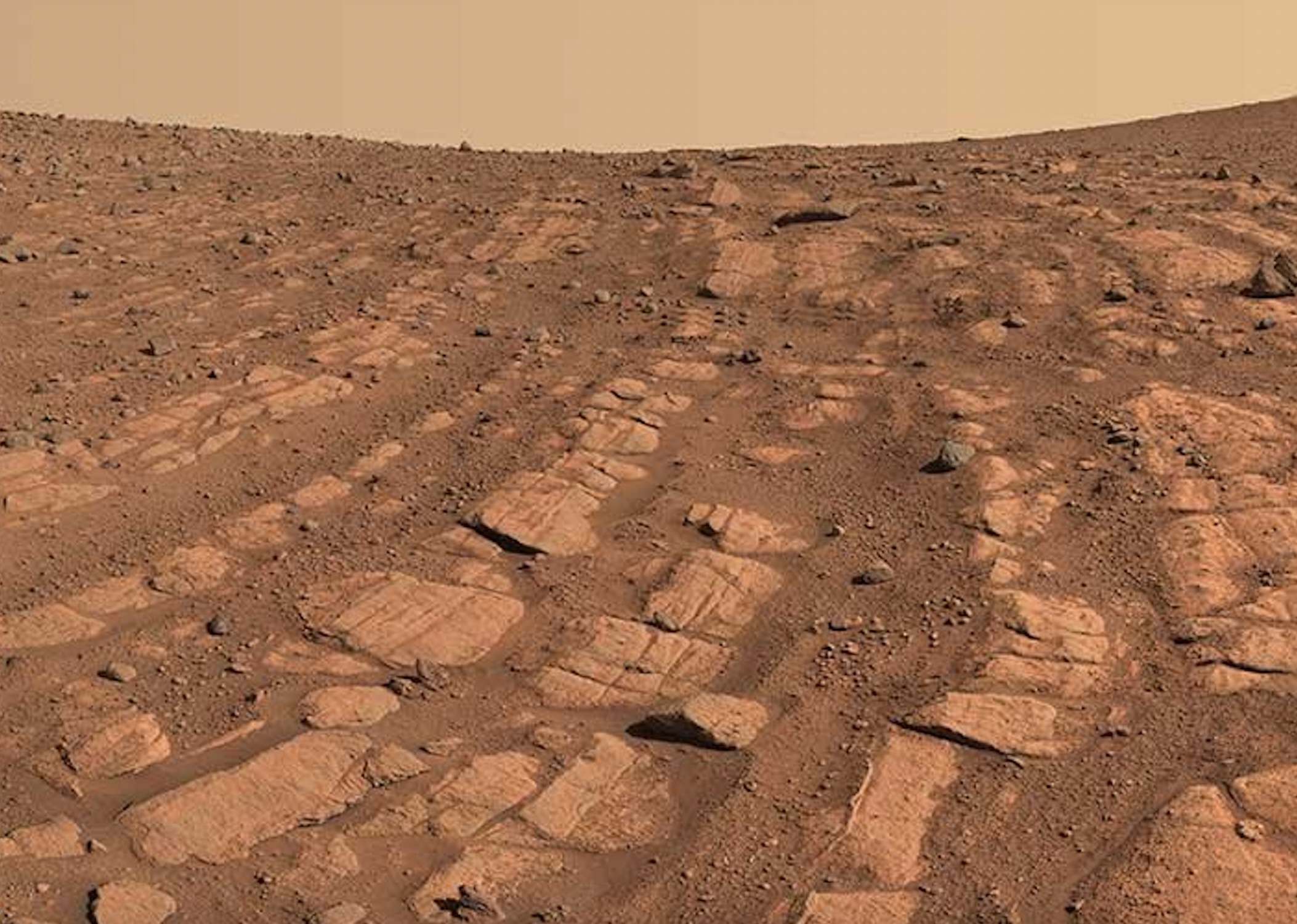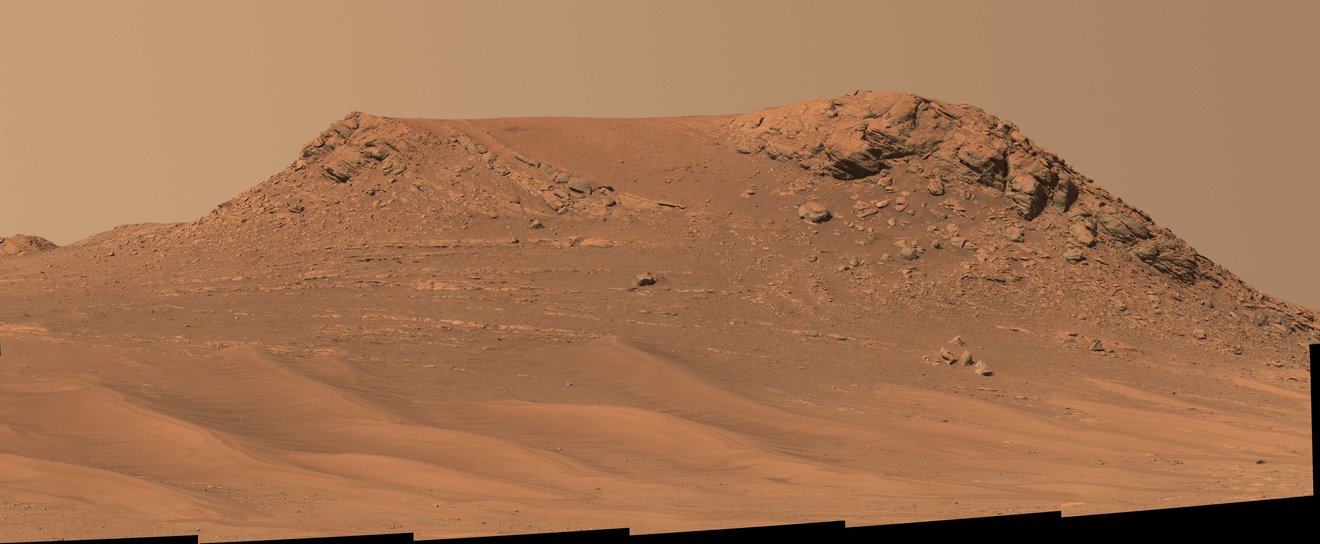
Ancient Mars may have had its share of raging rivers.
There are plenty of signs that liquid water flowed on the Red Planet long ago. But most of that evidence points to lakes, oceans or relatively gentle streams, such as the ancient creeks uncovered by NASA's Curiosity rover in Mars' huge Gale Crater.
But Curiosity's younger cousin Perseverance, which is been exploring a different Mars crater called Jezero, has rolled up on a long-dead riverbed that looks completely different. This one features coarse grains and cobbles, bulky stuff that couldn't be displaced by a mere trickle.
"Those indicate a high-energy river that's truckin' and carrying a lot of debris," Libby Ives, a postdoctoral researcher at NASA's Jet Propulsion Laboratory (JPL) in Southern California, which operates Perseverance, said in a statement on Thursday (May 11). "The more powerful the flow of water, the more easily it's able to move larger pieces of material."
Related: 12 amazing photos from the Perseverance rover's 1st year on Mars

Perseverance gathered some of this newfound evidence at a spot the mission team calls Skrinkle Haven (apparently in a nod to a beach in England). The site features curving bands of layered rock, which were almost certainly formed by powerfully flowing water, NASA officials said.
But the nature of the river that sculpted this landscape remains a matter of some debate. It may have been a snaking river whose banks shifted over time, or a "braided" one marked by protruding sand bars, mission team members said.
Get the Space.com Newsletter
Breaking space news, the latest updates on rocket launches, skywatching events and more!
In either scenario, the rock bands were likely much taller initially but were cut down to their present size by the sandblasting Martian wind.
"The wind has acted like a scalpel that has cut the tops off these deposits," Perseverance science team collaborator Michael Lamb, a river specialist based at the California Institute of Technology in Pasadena, said in the same statement.
"We do see deposits like this on Earth, but they're never as well exposed as they are here on Mars," Lamb added. "Earth is covered in vegetation that hides these layers."
Further potential evidence of fast-flowing ancient water comes from Pinestand, a hill that lies about 0.28 miles (0.45 kilometers) from Skrinkle Haven. Pinestand features sedimentary rock layers, some of which rise as high as 65 feet (20 meters).
"These layers are anomalously tall for rivers on Earth," Ives said. "But at the same time, the most common way to create these kinds of landforms would be a river."
The 28-mile-wide (45 km) Jezero hosted a big lake and a river delta long ago. Perseverance will continue exploring and characterizing this intriguing environment, which researchers think was capable of supporting Earth-like life long ago.
"What's exciting here is we've entered a new phase of Jezero's history. And it's the first time we're seeing environments like this on Mars," Perseverance Deputy Project Scientist Katie Stack Morgan of JPL said in the same statement. "We're thinking about rivers on a different scale than we have before."
Perseverance landed on Jezero's floor in February 2021, along with NASA's tiny Ingenuity helicopter. The rover is studying Jezero's geology, hunting for signs of past Mars life and collecting samples for future return to Earth.
Mike Wall is the author of "Out There" (Grand Central Publishing, 2018; illustrated by Karl Tate), a book about the search for alien life. Follow him on Twitter @michaeldwall. Follow us on Twitter @Spacedotcom and on Facebook.
Join our Space Forums to keep talking space on the latest missions, night sky and more! And if you have a news tip, correction or comment, let us know at: community@space.com.

Michael Wall is a Senior Space Writer with Space.com and joined the team in 2010. He primarily covers exoplanets, spaceflight and military space, but has been known to dabble in the space art beat. His book about the search for alien life, "Out There," was published on Nov. 13, 2018. Before becoming a science writer, Michael worked as a herpetologist and wildlife biologist. He has a Ph.D. in evolutionary biology from the University of Sydney, Australia, a bachelor's degree from the University of Arizona, and a graduate certificate in science writing from the University of California, Santa Cruz. To find out what his latest project is, you can follow Michael on Twitter.
-
Roderick Sprague (4th) Due to the sheer size of the flows, it might more instructive to compare the giant river flows to events like the Great Lake Missoula Glacial Floods, especially in Central Washington State. There are highly visible sediment and erosion patterns on a remarkably huge scale outside of what are seen in any of our present day rivers.Reply









